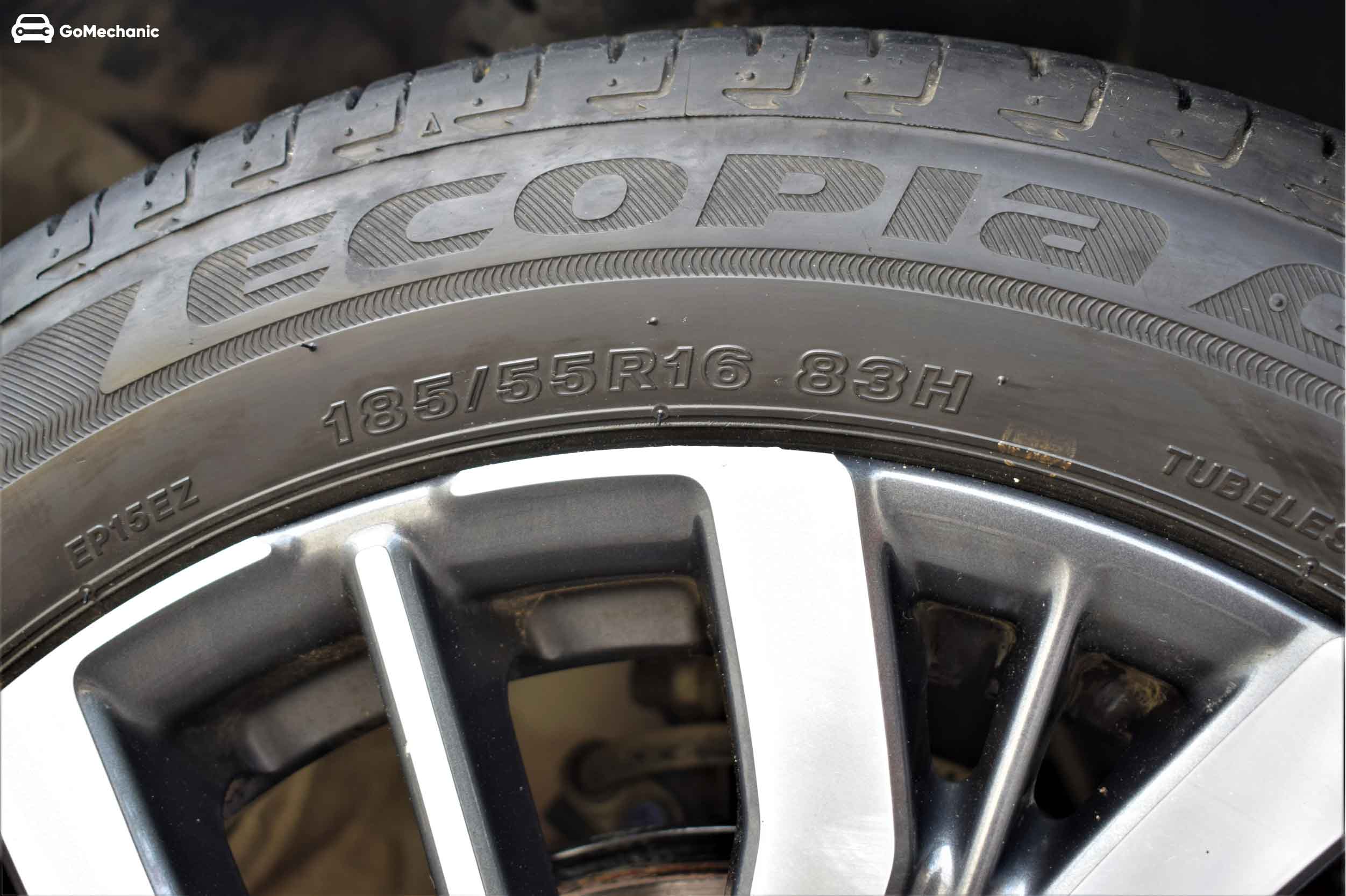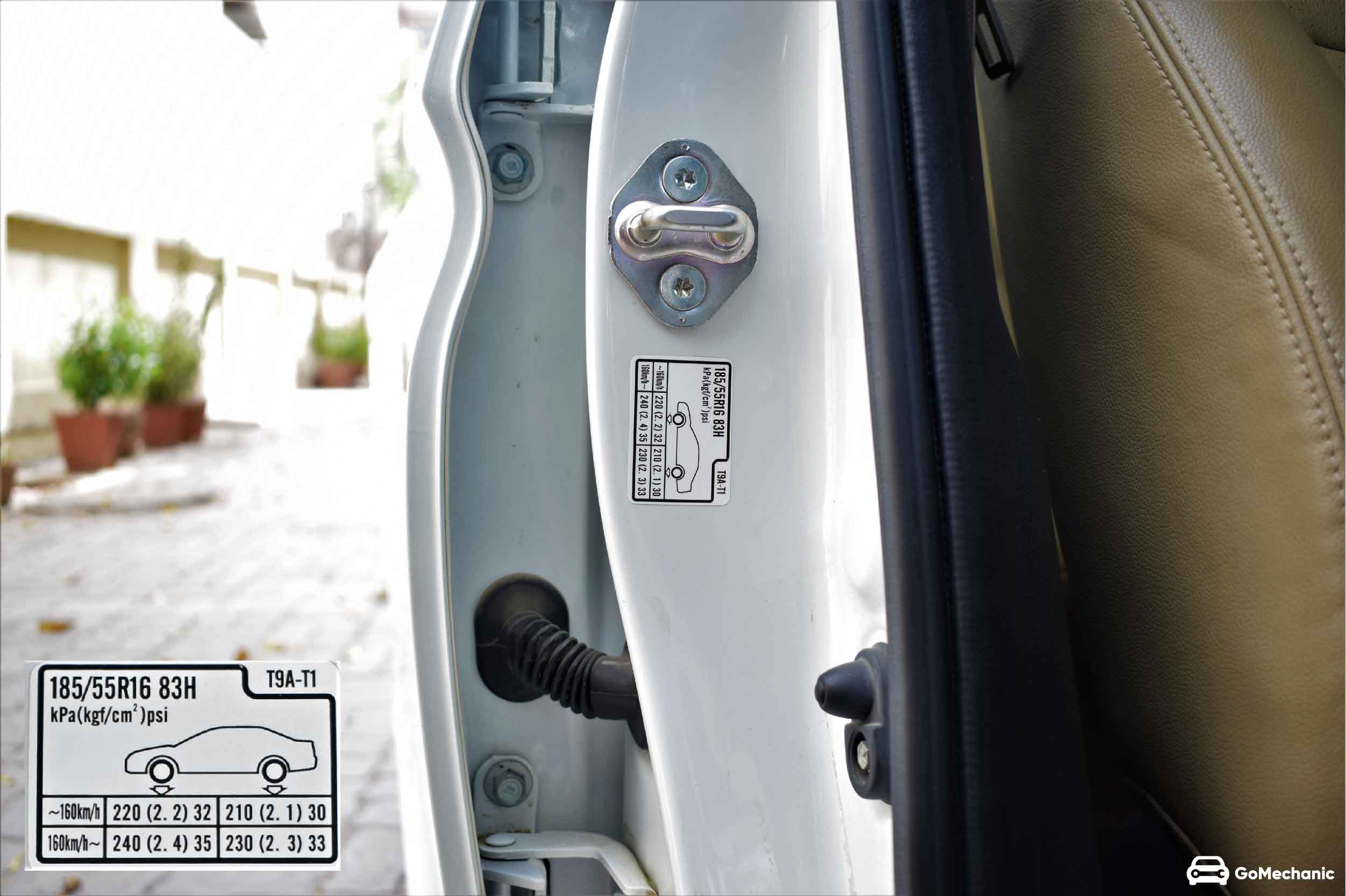175/65R15U, 185/60R15T, 185/65R15S Gets quite confusing, doesn’t it? You may have heard these cryptic being tossed around when you are at the shop getting your tyres replaced. Found on the sidewall of a car tyre, these markings on the tyres; numbers, letter, symbols whatever it may be, contain all the crucial information about a car tyre. In this blog post, we will learn about these car tyre markings.
Pro Tip: Get your vehicle’s tyre aligned and balanced after every 6 months.
For better understanding, let’s take an example;
185/55 R16 83H, which is a popular car tyre size typically found in mid-size sedans like the Honda City, Hyundai Verna, Maruti Suzuki Ciaz etc. Here, we will explain what each digit and number means; in-depth.
185/55 R16 83H

185: This is the maximum width of the car tyre in mm (millimetres), measured from sidewall to sidewall (basically how fat a car tyre is). This is an important number as it determines vehicle handling, traction and fuel economy.
55: This is the aspect ratio of the height of the car tyre sidewall with respect to its width. In this context, it is 55% of the width of the tyre. The higher the number, the greater the sidewall height. SUVs have a greater sidewall height (high profile tyre), thus providing better comfort and rigidity. On the other hand, performance and sports car have less tyre height (low profile tyre) that helps in handling and reduces rolling resistance.
R: This alphabet denotes the construction of the car tyre. R, in this case, stands for Radial. Bias Ply Tyres are denoted with the letter B.
[table id=1 /]
Radial Vs Bias Ply Vs Bias Belted Tyres
- Radial Tyre is the most commonly used tyre found on most cars and motorcycles. Radial tyres have steel belts running at a 90° angle from the tyre tread centre.
- Bias-Ply, also known as cross-ply or diagonal tyre have nylon belts running at a 45° angle from the tyre tread centre.
- Bias-Belted tyre is kind of a hybrid of bias ply and radial tyres. They have the same 45° construction like that of bias-ply but with steel, cables found in radial tyres.
16: This number after the alphabet signifies the wheel diameter. This number is of the highest importance as it is directly related to the size of the rim.
83: This is the load index of a car tyre. The maximum load-bearing capacity of the car tyre. In this respect, 83 stands for a maximum load-bearing capacity of 487 kgs.
[table id=2 /]
H: Finally, the last piece of the puzzle. This alphabet sets the maximum speed rating of a car tyre, which is the maximum speed the car tyre is can endure. H here translates to a maximum speed rating of 210 kmph.
[table id=5 /]
Nitrogen Vs Air: Which is the best for your car? Read Here.
Car Tyre Care: Top 3 Tips

Here are some tops tips on car tyre maintenance:
- Maintain recommended tyre pressure
This one is the most obvious. Find the recommended tyre pressure information on a sticker near the driver side door sill. Check tyre pressure weekly. - Do not overload your car
Overloading your car will put stress on the suspension, which in turn will cause the tyres to wear out or wear uneven. - Wheel Balancing/Alignment and tyre rotation; periodically
Get the wheels balanced and aligned every 5,000 kms to 10,000 kms. Tyre rotation every 10,000 kms.






[…] Must Read: Car Tyre Markings: What do they mean? […]